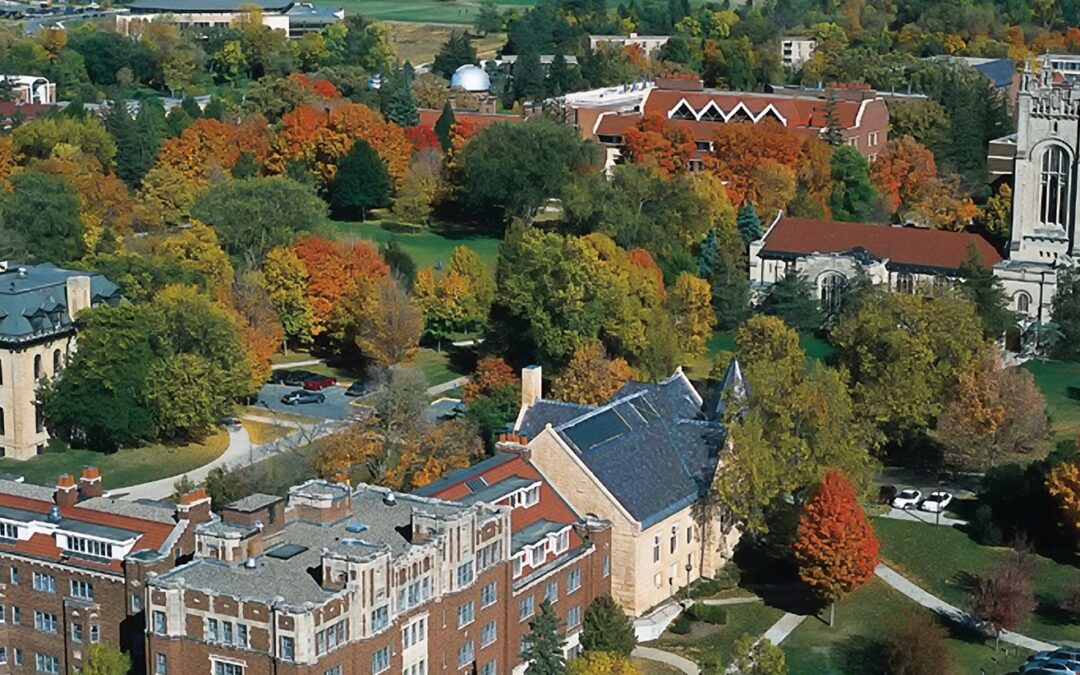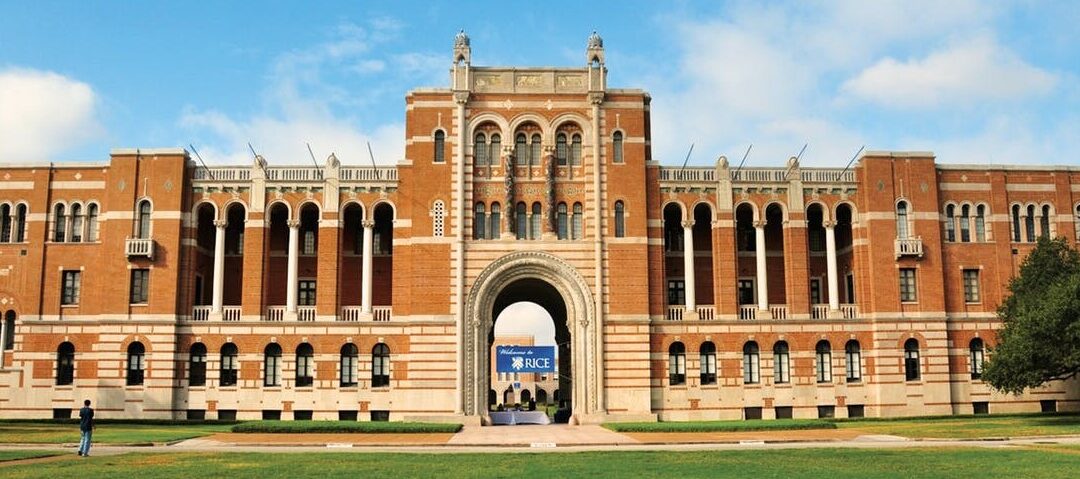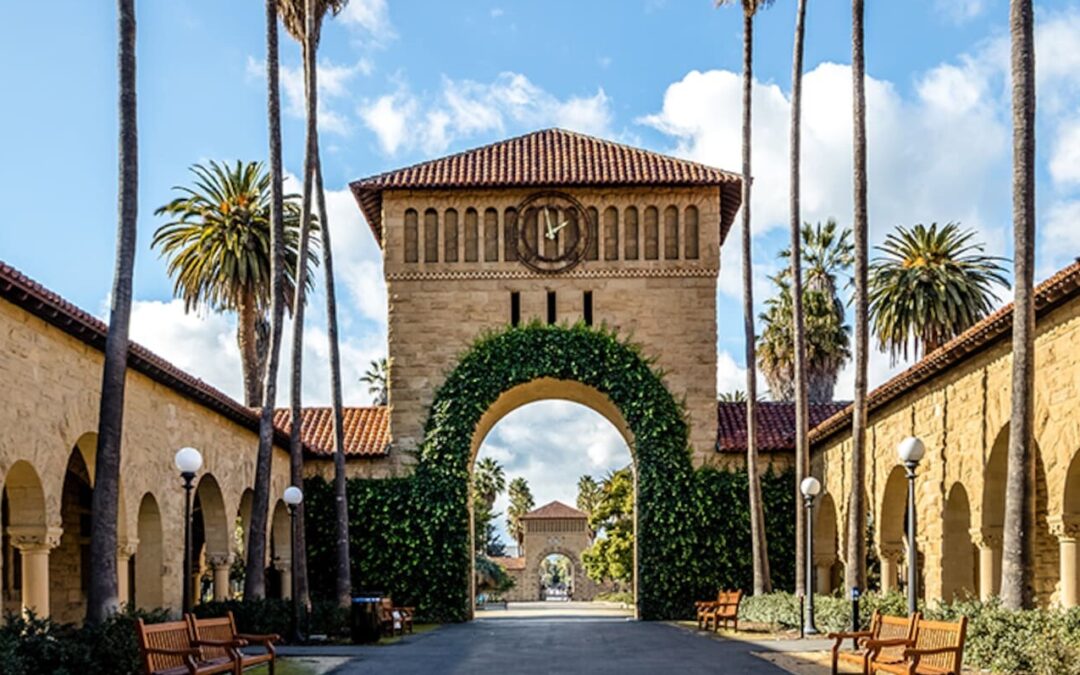
by College Goals
Here in New England, it seems that winter still has a firm grasp on our weather, but soon, spring will arrive, and high school students and their families will start thinking about embarking on some college visits and campus tours. Your interest may have been piqued by hearing about admission decisions from the older students; you may notice flyers for college fairs posted at school; and you’ll probably be considering or even prepping for standardized tests. But springtime also brings the opportunity for college visits, in three different ways, at three different stages of your higher education journey:
- Just Browsing: Younger students may find that winter/spring holidays with the family can be the perfect time to pop over to a college campus. If your vacation travels bring you near a university, I suggest that you take a couple of hours to wander around. It could also be a great opportunity for your parents to enjoy a trip down memory lane if you find yourself close to their alma mater. Walk around, eat a meal in the dining hall, and pop into the Admissions Office to pick up materials. You may even find it possible to jump onto a campus tour. These visits can give you a good idea of the size, the ethos of the university, the culture, and the location. Do you want a college within walking distance of the town? Does the campus look well-maintained? How close is the airport? Public transportation? One question you’ll have is how you would get home during the holidays!
- Serious shopping: When spring arrives in earnest, high school juniors will be seriously considering college options, major studies, and lists of likely locations. Remember that you’ll be starting your applications during the summer after your junior year, because you’ll likely be applying to some colleges ‘early’ (November!). So serious college visits, campus tours, classroom visits, and admissions presentations are essential for your information gathering. Try to put together an itinerary that sensibly combines geographic locations – your parents will appreciate that. Always go online and make reservations for student-led tours and presentations. Find out who your admissions representative is and see if you can make an appointment for a one-on-one meeting with her/him. Really take your time now to explore the campus thoroughly and in-depth – check out residence halls, talk to students, examine the library, the computer labs, the science labs, and learn about support services both personal and academic.
- Ready to buy: It is true that many students apply to several colleges without ever having set foot on campus. But in spring of your senior year, usually by the end of March, you’ll have all your decisions, and it’s time to take advantage of special campus visits for admitted students. These will include overnight stays, classroom visits in your chosen academic unit, meetings with students and faculty, and a session with the financial aid office. The National College Decision Day is May 1, so all these visits must be completed by then. Parents frequently attend these Admitted Student Visits and are offered their own programs, but they typically won’t be staying on campus with their students. These are the visits that count – you are choosing your new ‘home away from home’!
This tale of three distinctly different types of college visits all ends up in the same place. The moral to be gleaned is that you need to start early, stay focused on your campus research, and have as many experiences under your belt before having to make your final life-changing decisions. [/vc_column_text][/vc_column][/vc_row]

by College Goals
Soon, many sophomore and junior students must make choices about their courses for next year. We know the admission process at very selective colleges is based, above all, on your academic performance, and if your grades are not what the college wants to see, your chances of admission will be limited. But how do your curricular choices play out in that process?
Ideally, your college education should have both vertical depth in a single subject and horizontal breadth across many. Admission officers, especially at the most selective colleges, are trying to gauge whether your high school curriculum is equipping you, as a Harvard brochure on preparing for college described it, “with particular skills and information and … a broad perspective on the world and its possibilities.” In fact, most liberal arts colleges are not really admitting students to a particular major (there are exceptions, of course, mostly in pre-professional fields such as engineering and nursing). Thus, choices you make about your curriculum act as a mirror in which they can see your skill/aptitude for pursuing a particular academic interest, but also your curiosity and breadth of mind.
- Are you able to jump into challenging courses in your intended major and make good use of the opportunities on offer? Do you have the math training to take on engineering courses, for example? Do you have the analytical and writing skill to do well in a demanding philosophy course?
- Are you also able and curious to explore beyond your major? Are you flexible enough to see how those “other” ideas might even connect with your field and enrich it? This is as much a practical as a philosophical point. Knowledge is interconnected, and knowing something about statistics, for example, might be very useful to the prospective historian, while a pre-med’s perspective might be shaped by anthropological insights into different cultural assumptions about mind-body connections. In a rapidly changing world, you also don’t know what knowledge the future will require, or which bits of learning will start fading into obsolescence soon after graduation. Your career prospects, therefore, might depend on knowing how to learn, how to analyze critically, and how to communicate your great ideas, whether about a product you are developing or about a public policy you are promoting. You may well have developed some of these skills outside your major!
What does this mean for the courses you should choose in high school, especially if you intend to apply to selective colleges?
- Don’t specialize in high school – if you are mostly not being admitted to a major as a first year, then the fact that you avoided, for example, social science/humanities courses in high school because you intend to study data science, might be a red flag. Note that MIT and Harvey Mudd require applicants to have letters of recommendation from both a STEM teacher AND a humanities/social science one!
- Don’t choose courses because they might be easier, especially if you hope to apply to very selective colleges. Experienced admission officers know that a one-semester government class is likely not going to challenge you as much as AP US History, and that all IB math courses are not equally demanding. As Yale advises its applicants, “Pursue your intellectual interests, so long as it is not at the expense of your program’s overall rigor or your preparedness for college. Be honest with yourself when you are deciding between different courses. Are you choosing a particular course because you are truly excited about it and the challenge it presents, or are you also motivated by a desire to avoid a different academic subject?”
- Choose a course load that will show preparation in a broad academic core, because you will learn important skills and perspectives in each:
- History gives students a better understanding of how the past shapes the present and what is distinctive about our own moment. A rigorous economics course might do the same.
- English will help you write better in a global language and think more critically, while literature gives insight into other lives in different times and places.
- Foreign languages facilitate your access to a global world and to cultures that are not your own. Whether you want to be a businessperson or a physicist, being able to communicate with others and imagine different ways of being and thinking is essential.
- Mathematics not only allows you to balance your checkbook, but also to grasp new scientific discoveries, figure out the economic implications of environmental change, and understand a government’s trade policies. In short, mathematics equips you for modern life.
- Science, in a time when political freedom and environmental health are threatened by false facts and viral conspiracy theories, allows you to analyze scientific concepts and understand their consequences, and think creatively about technology.
- Finally, choose the right rigor for you. Students often ponder whether colleges care most about grades or about rigor. The stock answer is, of course, both. And if you aspire to ultra-selective colleges, this is good advice and a healthy reality check about your chances of admission. But it might not be the most useful advice for every student. NACAC, the national admission organization, counsels you to, “take the most challenging courses that are available and appropriate for you.” So, choose the toughest courses in which, with hard work, you can succeed, and then commit yourself to get as much from them as you can.
[/vc_column_text][/vc_column][/vc_row]

by College Goals
With colleges having announced their 2022 admission decisions, I yet again feel like a recording stuck in a loop as I reiterate to my students that admission at the more selective colleges has become even more challenging. Even so, this year does feel different to me somehow. Perhaps it is the fact that I have seen more amazingly accomplished students who did not get into their dream schools – or indeed even into the ones they deemed target schools – than ever before, that makes the college admission process feel increasingly untenable.
While we wait for waitlists to settle down in coming months, though, a few themes have emerged.
- The University of California’s decisions have left counselors scratching their heads as top academic in-state performers found themselves denied or waitlisted by virtually every UC campus. An article in SF Gate that tracked the UC admit rates over the last 25 years, points out that in 1997 UCLA admitted 36%, UCB 31%, and UCSB, UCI and UCD all around 70%. Today those same schools range from 14% at UCLA and 17% at Berkeley, to 30% at UCI, 37% at UCSB and 46% at UCD. In all cases, Colleges of Engineering admit rates are far below that of each University as a whole.
- Knowing that, in a test-optional world, more kids feel free to apply to more selective colleges, schools are trying to figure what all the uncertainty and turmoil means for their yield, the number of students who will accept their offers. No one wants unfilled dorm beds or overfull classrooms. To help manage that uncertainty, many colleges are filling even a bigger portion of their first-year class with committed Early Decision applicants. The list of colleges that accept more than 50% of their incoming class in Early Decision – Bates, Bowdoin, Claremont, Colby, Haverford, NYU, Northwestern, and many others – is growing. Colleges also waitlist large numbers of applicants, and this year many seniors have found themselves waitlisted even at colleges where they had applied to an early program months earlier.
- Applicants to certain majors seem to have done especially poorly this year, especially in Computer Science, Data Science, Engineering, business and even some life sciences. Presumably this reflects both the huge numbers of applicants attracted to (or pushed towards) fields that seem to promise steady jobs and financial success, as well as the struggles of colleges to meet that surging demand with adequate research and faculty resources (in the five years after 2013/14, for example, the number of CS degrees conferred nationally increased by 60%).
What lessons might current juniors take from all of this?
- Take a healthy reality check from the admit rates. Remember that colleges with single digit admit rates have applicant pools full of strong and accomplished students (far more than they can admit) and the fact that you are one of them means you will be seriously considered. But at the end of the day those schools will admit students based on their limited space and institutional needs. Your college list must reflect the possibility that it might not be you.
- Build your college list on a thoughtful foundation of probable and possible colleges, knowing that a so-called safety is not simply a school to which you will likely be admitted but also one where you will still thrive. The litmus test of admission – if this is the only school to which you were admitted, will you attend – is more important than ever, and many high-performing students found themselves confronted with exactly that outcome.
- Think of your college list less as a series of set categories – probable/safety, possible/target, reach/ultra-reach – than as a dynamic process in which probability shifts according to application timing. Is a college still a target if you apply in Regular Decision, or does it fill so much of its class in Early that the admit rate is halved or even quartered for students applying in Regular Decision?
- Consider your academic narrative in which you explain what you want to study and why you want to do it at any specific college. Most colleges don’t assume you are fixing your major in place when you apply (there are a few exceptions) so discussing your intended major is mostly just an opportunity to show the college the critical depth and analytical skill you have to offer. BUT if the major on your application is in a field that seems overcrowded with applicants, or if it is clear from your limited curiosity that your intended field of study is simply a pathway to a steady job and good paycheck, it makes it harder for admission officers to appreciate what you have to offer academically. (See the recent guest posting on our blog about thinking beyond computer science as a major.)
- And finally, parents come to college admission with assumptions about the process derived from their own experiences and fueled with intense admiration for their children’s hard work and exceptional performances. But it is a different world from the one in which they applied to colleges and it requires new expectations. Thus, in 1990:
- Boston University had 12,400 applicants and admitted 45%. This year it received 80,800 applicants and admitted 14%.
- Northeastern University admitted 97% of its 10,600 applicants. This year, it received 91,000 applicants and admitted 7%.
- Stanford had just under 13,000 applicants and admitted about 22%; last year it received 55,470 applicants and admitted just under 4%.
- Columbia had under 6,000 applicants and admitted 32%; this year the school had over 60,000 applicants and admitted 4%.
- Cornell had about 20,000 applications and admitted about 30%; last year, over 67,000 applied and only 9% made the mark (Cornell is unfortunately one of the colleges that decided this year not to reveal its admission statistics).
- USC admitted a whopping 70% of about 10,000 applicants, bemoaning its declining enrollment; this year, it admitted 12% of the approximately 70,000 applicants.
For many seniors these days, the stress of college admissions feels less like the churning anticipation of preparing for a grand journey, and more like an anxious grind towards misplaced expectations in which much feels beyond one’s control. Perhaps it is only when they accept that their prosperity in life will depend far less on where they choose to attend than on the choices they make once they are on campus, that they will be able to reclaim the adventure.[/vc_column_text][/vc_column][/vc_row]

by College Goals
Guest Blogger, Sam Fisher
Applying to college seems to get harder every year, and the only thing even tougher is applying to college as a prospective computer science major. A New York Times article noted, for example, that in 2019 more than 3,300 incoming first-year students at UT Austin sought computer science as their first choice of major, which was more than double the number who did so five years earlier. The same year, and in response to a reality in which some 20% of Stanford undergraduate degrees are conferred in CS, The Stanford Daily published an article on “CS in Crisis.”
No wonder many prospective first years are fearful about their chances of admission to a top CS program! But it’s not all bad news. As someone who’s done this myself and knows many others like me, I am here to tell you that majoring in computer science is not the only way to get into software engineering (or other top jobs in tech). And, in my opinion, it’s not even the best way.
It may surprise you to hear that, to be a successful software engineer out of college, it likely only requires you to take around five computer science classes while in school. In those five or so classes (let’s say 2-3 core classes teaching you the fundamentals of coding and 2-3 electives in an area you find interesting), you can develop all of the fundamentals you need to kick off your career. Those classes are essential, so don’t skimp out on them, and furthermore, I recommend taking them as early in college as you can.
Once you get beyond those core classes that teach you the fundamentals of how to write code, most of your gains in developing your skills as a software engineer will come from side projects and on-the-job training. Side projects are easy to find. Work on them with your friends, if possible, and treat them like real-world projects. Even if it’s overkill for those projects, try to use Source Control like Github or Gitlab, and try deploying them to a cloud provider through a free trial or student credit programs. You’ll gain key knowledge in places where many computer science majors even fall short, and it’ll help you stand out in your internships and job interviews.
So what classes should you take, and what should you consider majoring in? The short answer: anything you find interesting. Have you always been interested in psychology? Maybe major in that. Or perhaps you love learning new languages and cultures, so you major in Spanish and study abroad in Latin America? Or maybe you’ve always been interested in sciences, and you’ll explore biology, chemistry, or environmental sciences in your first few years before deciding on a major.
And what would those majors do for you if you chose them? Beyond the core value of teaching you how to think and helping your mind grow, you might develop expertise that helps you in your first coding job, or whatever early career you choose.
Let’s say you chose that psychology major; it could make you much more attuned to user experience and how people learn, key skills in user-centered app development, product management, and product design. What if you chose the Spanish major? You could build out a start-up in one of the fastest-growing, low-cost coding hubs in the region like Bogota, and have a cultural leg-up in understanding their labor market and consumer preferences. Finally, if you majored in biology, you could have an enormous advantage applying to be an engineer in the biotech space, working for a company like 23andme or the next great startup.
The world is short on talented computer scientists right now, but even more so, it’s short on people with expertise and passion in their field with enough computer science knowledge to be effective. Those are the people who will be the biggest winners and make the most impact.
Sam Fisher is a senior product manager at Oracle Cloud and graduated from Stanford with a BS in Symbolic Systems in 2014 and an MBA in 2019.[/vc_column_text][/vc_column][/vc_row]

by College Goals
Every year commentators call on new superlatives to describe the plummeting admit rates at selective colleges. Beset by a growing sense of anxiety about their chances of admission to increasingly rejective colleges, students cast around for explanations in a process that feels increasingly out of their control. “It is not fair,” they say.
They are right, of course, if by fair one means a straightforward, linear application process that rewards clearly defined accomplishments and penalizes equally defined lapses. In fact, college admission has never been “fair” in that sense. After all, how is it fair when some students find that application process easier to navigate than other equally accomplished students, because they have well-educated parents familiar with it? Or when a wealthy family can trade influence and donations for a place at a very selective college? Or when some families can afford a great college education without breaking the bank, while many others, disproportionally students of color, will graduate with crushing debt, if at all?
Perhaps the reason why we want to cast the process within that fair/unfair binary is that it puts the focus on individual students and what they have done and achieved. That allows for a sense of control – if I know that doing X will achieve Y, it becomes within my reach. Doing so, though, misses a very important reality about college admission: it is not simply, or even mostly, about individual students. Rather, it is about the institutional needs of the college.
Listening to families talk, one might assume that an admission office IS the college. But, in reality, the former is simply one piece (albeit an important one!) within a larger institutional whole. As such, it is subject to myriad demands and needs from all corners of that bigger edifice. Does the college’s well-known touring orchestra need a new harpist? Has the anthropology department expanded and would therefore like to see a few more prospective anthropologists? Is the university keen to maintain its status as a liberal arts institution rather than a technical school? Can the institution compete with private industry, and its much higher wages, for enough accomplished computer scientists and biochemists to teach the vast army of STEM applicants? Does the public institution need to accept more out-of-state students because its own state government fails to adequately fund it?
Colleges will address these challenges in many ways. But undergraduate admission is one very significant tool with which to do so. Does this make its admission policies and decisions unfair? It will surely feel so to very diligent high school students who did whatever was asked of them to become a strong candidate and still find themselves turned away by very selective institutions. Their disenchantment is fed by many admission offices that insist that their lack of transparency, even about basic information such as admit rates, is meant to benefit students. (With Penn, Cornell and Princeton joining Stanford in refusing to reveal their admit rates, a shout-out to those folks, like Andy Borst at Illinois and Rick Clark at Georgia Tech, who are working to help pull the curtain back and allow families to see them at work.)
At a moment when higher education is under attack from multiple directions in American society, blunt honesty might be the best marketing strategy of all! Meanwhile, students might want to ponder the fact that when admission officers talk about “holistic” – that magic fig leave of admission speak – the whole in question refers as much to the institution of which an admission office is merely one cog as it does individual students and their contributions.[/vc_column_text][/vc_column][/vc_row]





